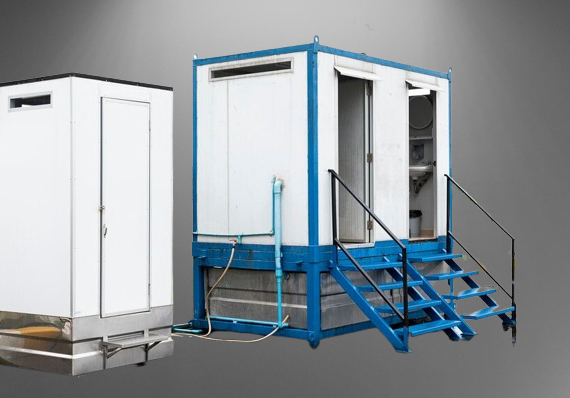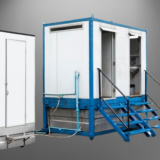In the world of agriculture, where hard work and unpredictable weather are the norm, having the right attire can make all the difference. Agricultural workwear isn’t just about fashion; it’s about practicality, safety, and comfort. Whether you’re a seasoned farmer or just starting in the field, knowing how to dress for success on the farm is essential.
Farmers and agricultural workers face unique challenges daily, from tending to crops under the scorching sun to enduring the cold, wet conditions of the early morning hours. The right clothing can mean the distinction between a productive day and a challenging one.
This comprehensive guide will delve into the intricacies of agricultural workwear, providing insights into the best materials, styles, and accessories that cater to the needs of those who toil on the land. From headgear to footwear, we’ll explore every aspect of dressing for success on the farm.
Understanding the Importance of Agricultural Workwear
Agricultural workwear holds a pivotal role in the life of farmers and agricultural workers. It transcends mere clothing; it’s a shield against the rigors of the farm. Why does it matter, you might wonder? Well, picture this: a blazing summer day, the sun beating down relentlessly, or a chilly morning amidst dew-covered fields. In these scenarios, your choice of workwear isn’t just about comfort; it’s about safety and efficiency.

Agricultural tasks often involve sharp tools, heavy machinery, and exposure to the elements, making the right attire a critical component of farm life. This section delves into why agricultural workwear is more than just a dress code; it’s a key factor in ensuring that every day on the farm is a step towards success rather than a stumble into adversity. So, let’s explore how the right workwear can make a world of difference in the agricultural realm.
In this section, we will explore how agricultural workwear goes beyond mere clothing, encompassing safety, comfort, and productivity. We’ll delve into the various factors that make it an integral part of every farmer’s life and how choosing the right workwear can lead to success on the farm.
Agricultural Workwear for Different Farming Activities
Farming is a diverse and multifaceted profession, encompassing various activities and specialties. The type of agricultural workwear you choose should align with the specific demands of your farming activities. Crop farming, livestock farming, and specialty farming each come with their own set of challenges and requirements.
For instance, crop farmers who spend long hours in the fields need workwear that offers protection from the sun, wind, and potential exposure to pesticides. Breathable shirts and wide-brimmed hats become essential components of their attire.
In contrast, livestock farmers often work in close proximity to animals, which can lead to dirt, moisture, and odors. Durable and washable clothing is crucial in this context.
Specialty farming, which includes activities like beekeeping or aquaculture, may require specialized gear such as bee suits or waterproof attire.
Understanding the unique demands of your specific farming activities is key to selecting the right workwear that not only ensures safety but also enhances your productivity and overall experience in the field. In this section, we’ll delve into the tailored workwear options available for different farming activities, helping you make informed choices that align with your farming goals.
Choosing the Right Materials
Selecting the appropriate materials for your agricultural workwear is a critical decision that impacts your comfort, safety, and overall effectiveness on the farm. Different materials offer distinct advantages, and your choice should align with the specific demands of your work environment.
Cotton, a timeless classic in farming attire, is favored for its breathability and natural comfort. It’s an excellent choice for those long, hot days in the field. On the other hand, modern technology has brought forth synthetic fabrics known for their durability and functionality. These materials are designed to withstand the wear and tear of farm work while offering excellent moisture-wicking properties.
For those looking to go the extra mile, specialty fabrics engineered explicitly for agricultural use are available. These fabrics often incorporate innovative features such as UV protection, water resistance, and insect repellency, providing additional layers of safety and convenience.
Maintaining Your Workwear
Once you’ve invested in the right agricultural workwear to suit your farming activities and preferences, it’s essential to ensure that your clothing remains in optimal condition. Proper maintenance not only extends the lifespan of your workwear but also ensures that it continues to provide the safety and comfort you rely on.
Regular washing is a fundamental aspect of workwear maintenance. Farming can be a dirty job, and your clothing is bound to accumulate soil, stains, and odors. Following manufacturer guidelines for washing and drying your workwear is essential. Paying attention to specific cleaning instructions, especially for specialty fabrics, can prevent damage and maintain the fabric’s unique properties.
Additionally, inspect your workwear regularly for signs of wear and tear. Loose threads, frayed fabric, or damaged closures can compromise the integrity of your clothing. Addressing these issues promptly through repairs or replacements is crucial to maintaining the safety and functionality of your workwear.
In this section, we’ll provide practical tips and guidance on how to properly care for your agricultural workwear, ensuring that it continues to serve as your reliable partner in the field. From washing and drying to basic repairs, we’ll cover the essentials to keep your workwear in top condition season after season.
Where to Shop for Agricultural Workwear
Finding the right agricultural workwear can be a rewarding yet challenging task. Fortunately, several options are available to suit your preferences and needs. Local agricultural supply stores and farm equipment retailers often carry a selection of workwear designed specifically for the demands of farming. Visiting these local outlets allows you to try on different clothing items, ensuring they fit comfortably and meet your requirements.
In recent years, the convenience of online shopping has also extended to agricultural workwear. Numerous online retailers specialize in farm clothing and offer a wide range of options. Shopping online provides access to a broader selection, competitive pricing, and the convenience of doorstep delivery.
When considering where to shop for your agricultural workwear, it’s essential to balance convenience, budget, and product variety. Whether you choose to visit a local store or explore online options, conducting thorough research and reading customer reviews can help you make informed decisions and find the workwear that best suits your farming needs.
Safety Regulations and Compliance
Safety is paramount in the agricultural industry, and adhering to safety regulations and compliance standards is not just a recommendation; it’s a necessity. Governments and industry organizations have established stringent guidelines to protect the well-being of farmers and agricultural workers. These regulations cover various aspects, including the use of personal protective equipment (PPE), safe operation of machinery, and handling of chemicals and pesticides.
When it comes to agricultural workwear, safety regulations often dictate specific requirements, such as wearing helmets in certain situations or using high-visibility clothing when working near roadways. Compliance with these regulations not only ensures your personal safety but also helps prevent accidents and injuries on the farm.
It’s crucial for farmers and farm managers to stay informed about the latest safety regulations relevant to their specific operations and to ensure that all workers are appropriately trained and equipped with the necessary safety gear. By prioritizing safety and compliance, agricultural professionals can create a secure working environment that benefits everyone involved in farm activities.
Conclusion
In the world of agriculture, where hard work and unpredictable conditions are the norm, the right choice of agricultural workwear can make all the difference. It’s not merely a matter of clothing; it’s a matter of practicality, safety, and efficiency. From the protection offered by sturdy overalls to the comfort of moisture-wicking shirts and the convenience of specialized fabrics, your workwear can impact every aspect of your farming experience.
Safety regulations and compliance standards are in place for a reason, emphasizing the importance of proper attire and protective gear. Adhering to these guidelines isn’t just about following the rules; it’s about safeguarding yourself and those around you. When working outdoors, reliable agricultural workwear is essential, just like choosing the best ukulele for beginner is crucial for aspiring musicians.







